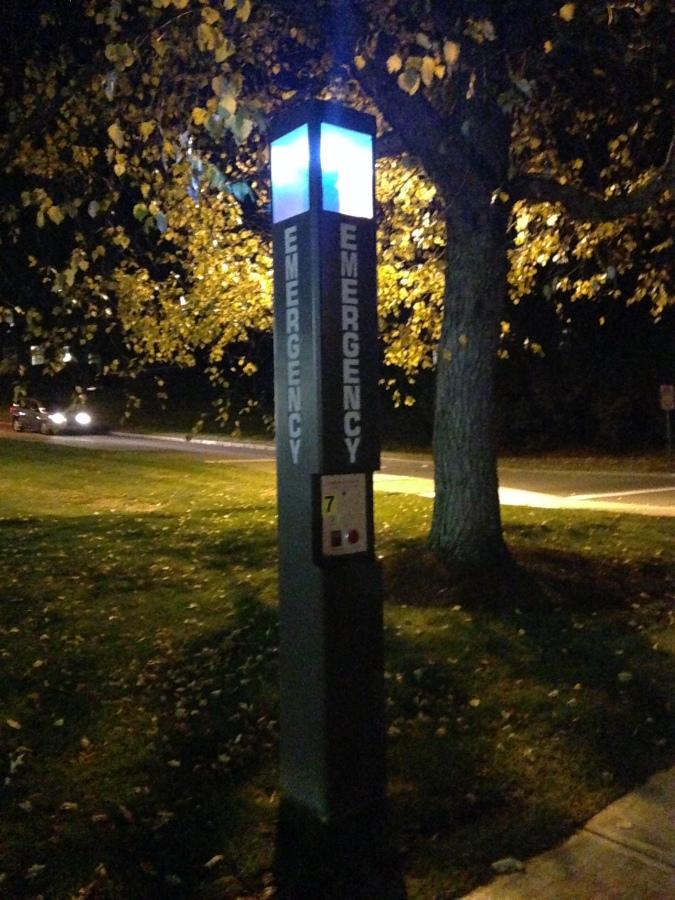For Campo, safety tops list of priorities
November 12, 2014
In light of the rise in assaults across college campuses nationwide this year, and the publication of the 2014 St. Anselm security report, the question of campus safety is an inevitable topic.
While Saint Anselm is a relatively safe place, as a female student there is still an unsettling feeling in the back of my mind when walking across campus by myself at night. However, the blue light boxes scattered throughout campus do bring some sense of safety back.
Speaking with Mr. Donald W. Davidson, Director of Campus Security and Safety, helped to clarify much of the mistaken information about the blue light boxes.
“Once you press the button, it directly calls the Goffstown police. St. Anselm campus security doesn’t have its own dispatch system and I think a lot of people don’t realize that we aren’t directly called. It’s the police station that dispatches their officers, medical, and fire aid. Once the button is pressed you need to wait for the Goffstown police department to respond over the phone system installed in the boxes. After that, identify where you are on campus by giving the responder the code printed on the box”.
Phones in buildings and dorms throughout campus are also able to call the police, by dialing 555.
At first this was somewhat unsettling to find out; having to wait for the Goffstown police and then Campo to be informed seems counterproductive to having a quick response time.
Yet, Mr. Davidson brings up the point that, “with the changes in technology almost everyone today has a cell phone. This is slowly making the blue light boxes obsolete. It’s much more effective to be able to run away from an attacker and call 911 on a cell phone than stand at a box trying to fight them off while talking to the police”.
This logic is hard to argue with and does make the choice to remove, rather than update, some blue light boxes easier to understand.
Although two boxes were removed, each stanchion is still equipped with a camera that scans the surrounding area and is watched by Campo.
Mr. Davidson commented that, “if it becomes vital to replace the blue light boxes I’ll make it happen, but if there’s a box needing repair that’s right next to a building with a campus phone, it’s unnecessary to need the blue light box and phone as well. I’d rather be able to use the money towards something else on campus, such as a new smart classroom”.
As much as I agree with wanting to spend the money on other additions to the school, I still like knowing that the boxes are being kept and maintained, just in case I ever do need them.
For the most part though blue light boxes have been seen as a security measure for visitors to the campus.
“When people come and visit, they might not always be aware of what to do in an emergency; however, the blue light box is a way for them to connect with police”, Mr. Davidson says.
I have found that the majority of students at St. A’s are very cautious and aware of their surroundings.
Rare is it to see anyone walking alone at night without either a friend or cell phone in hand. Of course, Campo is always willing to drive those who would like the extra security, but our campus has 14 boxes and 40 phones that are available for student use in emergencies.
Ultimately, Campo is here to help. While some of their security measures may seem slow or counterproductive at first, they actually prove to be very well thought out and planned so as to keep St. A’s students as safe as possible.
If you’re not completely sure where security boxes or phones are located you can check out the Campus Map by going to www.anselm.edu, scrolling down to the bottom of the page to “Visit Us” and clicking on “Campus Map”. There you can find where individual phones, blue light boxes, and other security devices are on campus.



